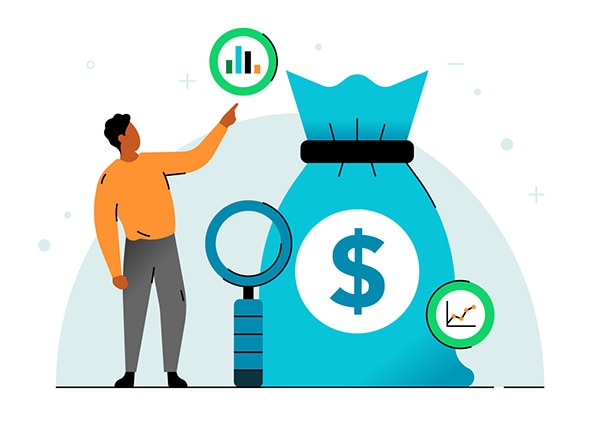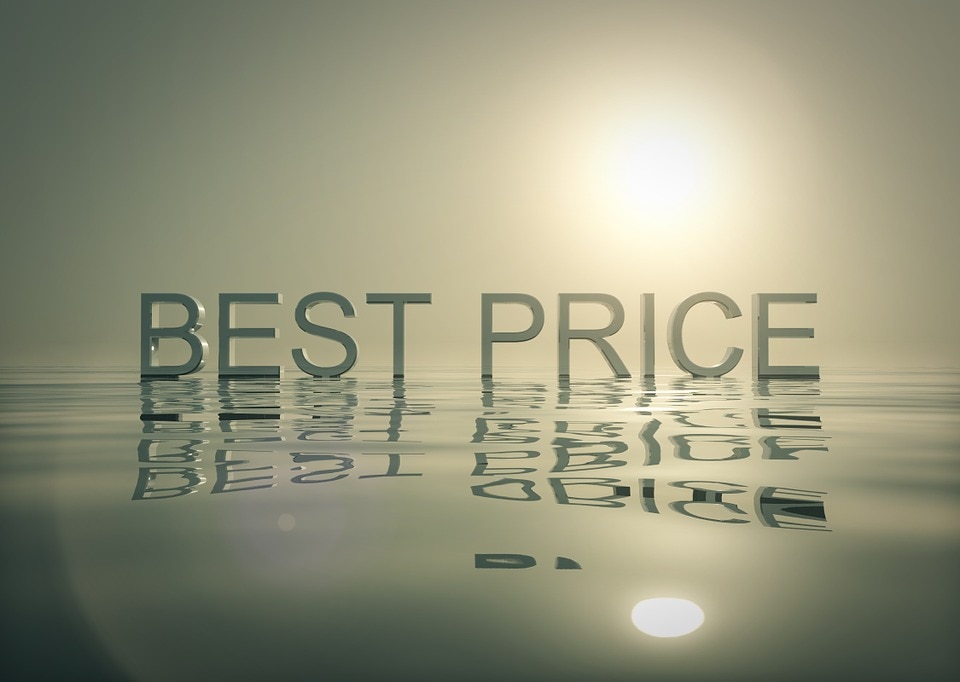Gross profit is a great tool to manage both sales and cost of goods sold. This discussion defines gross profit, calculates gross profit using an example, and explains components of the formula. You’ll read about strategies to reduce costs, and to increase company profits.

Lower costs and increase revenue using the gross profit formula
What is gross profit?
The definition of gross profit is total sales less cost of goods sold (COGS).
Sales is defined as the dollar amount of goods and services you sell to customers. The cost of goods sold balance includes all costs that are directly related to creating and selling the product or service.
It’s important to note that gross profit is different from net income. To calculate net income, you must subtract operating expenses from gross profit.
In addition, sales does not equal revenue. Total revenue includes sales, and other activities that generate cash inflows and profit. If a manufacturer, for example, sells a piece of equipment for a gain, the transaction generates revenue. However, a gain on sale is different from selling a product to a customer.
A gain on sale is posted to the income statement as non-operating income, and is not part of the gross profit formula.
Every manager should analyse financial data, including gross profit, in order to improve business results.
Why do you need to calculate gross profit?
Sales and cost of goods sold are two of the biggest balances in the income statement. If you can make changes to either balance, you can increase profitability. Operating expenses may be harder to reduce, since many of the costs are fixed.
How to calculate gross profit: Examples
To understand the gross profit formula, meet Sally, the owner of Outdoor Manufacturing. Sally’s business manufactures hiking boots, and her firm just completed its first year of operations.
The sales component of the formula is straightforward (selling price multiplied by the number of boots sold). Outdoor sold $520,000 of boots in 2020. The firm’s cost of sales component is more complex, however. What expenses are included in the cost of goods sold balance?
The cost of goods sold balance includes both direct costs and indirect costs (overhead). Managers need to analyse costs and determine if they are direct or indirect. In addition, companies must label expenses as fixed or variable costs.
Direct vs. indirect costs
Direct costs are directly related to producing a product or delivering a service. The most common direct costs are raw materials and labour costs.
Indirect costs, on the other hand, cannot be traced to a specific product or service.
Outdoor’s cost of goods sold balance includes both direct and indirect costs.
Direct materials
Outdoor purchases leather material to manufacture hiking boots, and each boot requires 1.67 square metres of leather. Both the cost of leather and the amount of material required can be directly traced to each boot. Outdoor knows how much material is required to produce a 1,000 production run of boots.
Direct labour
Hiking boot production also requires labour costs. Outdoor pays workers to operate cutting and sewing machines, and to stitch some portions of each boot by hand.
Based on industry experience, the management knows how many hours of labour costs are required to produce a boot. The hours, multiplied by the hourly pay rate, equal the direct labour costs per boot. Outdoor knows the direct labour costs required to produce 1,000 boots.
The 2020 income statement reports that Outdoor incurred $170,000 in direct material costs and $250,000 in direct labour costs.
Indirect costs cannot be directly traced to a product or service. Instead, indirect costs are allocated to production. Most managers use the term “overhead costs”, rather than indirect costs.
Allocation of overhead costs
Outdoor’s overhead costs are posted to operating expenses. The only way to recover overhead costs is to sell an item to a customer, so each dollar of overhead costs must be allocated to a product or service.
Overhead costs are allocated, based on a level of activity. Here are some common examples:
Tradespeople (carpenters, plumbers, tree service firms) incur mileage costs as they travel to each client’s location. The more kilometres driven, the more repair and maintenance costs incurred on vehicles. A plumber may allocate overhead costs based on kilometres driven. If serving a customer requires 30 kilometres, the plumber adds 10 cents per kilometre to cover vehicle repair and maintenance costs.
Overhead costs are frequently allocated using machine hours incurred, labour hours required, or simply using the number of units produced.
Fixed costs vs. variable costs
Managers need to know why a particular cost is being incurred. One way to understand costs is to determine if the expense is fixed or variable.
Direct costs, such as materials and labour, are typically costs that vary with production. However, if a customer contract requires you to hire an outside firm to assess quality control, that one-time cost may be considered a fixed direct cost.
The cost paid to an office security company is a fixed overhead cost. You need the firm to protect company assets, regardless of how much you produce or sell. On the other hand, the hourly rate paid to repair company machinery is a variable overhead cost.
Inventoriable costs are not immediately assigned to the cost of goods sold account.
Inventoriable costs
Inventoriable costs are defined as all costs to prepare an inventory item for sale. This balance includes the amount paid for the inventory item, and shipping costs. If a retailer must build shelving or incur other costs to display the inventory, the expenses are inventoriable costs.
The cost to train people to use a product are also included in this category. The cost to train employees to use IT is a good example.
When the inventory item is sold, the inventoriable costs are reclassified to the cost of goods sold account. A retailer may have thousands or even millions of dollars in inventoriable costs that are not yet expensed.
Gross profit vs. gross margin
Gross margin is expressed as a percentage, while gross profit is stated as a dollar amount. Gross margin is defined by this formula:
(Total revenue – cost of goods sold) / (total revenue)
The 2020 gross margin for Outdoor is:
($520,000 revenue – $420,000 cost of goods sold) / ($520,000 revenue) = 19.2%
For every dollar of sales, Outdoor generates about 19 cents of gross margin. The gross profit formula helps you identify cost saving opportunities on a per product basis.
Achieve profitability with the gross profit formula
To improve gross margin, focus on the components of the formula.
Increasing revenue
Businesses can increase revenue by raising prices, but price increases can be difficult in industries that face a high level of competition. The ability to purchase products and services online also puts downward pressure on prices.
There are other strategies to increase revenue, but the most effective way is to increase sales to your existing customer base. You can also increase revenue by improving your marketing outcomes. Use promotions, rewards, and testimonials to promote your products, and survey your customers to find out what products they want.
The other strategy to increase gross profit is to reduce costs.
Reduce material costs
You can reduce material costs by negotiating a lower price with your suppliers. If you’re a large customer who buys materials every month, you may be able to negotiate a lower price, based on your purchase volume.
The material costs you incur are driven by cost, and by usage. Analyse your production and take steps to avoid wasting material.
Take a close look at your labour costs, and see if you can find ways to lower spending.
Decreasing labour costs
Just as with material costs, labour costs are a function of the hourly rate paid and the number of hours worked.
The hourly rate you pay is closely tied to current economic conditions and the rate of unemployment. If the economy is growing, you may need to pay a higher hourly rate of pay to hire qualified workers. The opposite is true in a slowing economy.
Invest in training, so that employees can work efficiently. Well-trained workers can get more done in less time, and they make fewer mistakes.
When you create an annual budget, include gross profit calculations to forecast company profit.
Using gross profit calculations in your business planning
When you build a budget using gross profit, you can reduce costs and increase revenue in the planning process.
Use accounting software that can easily generate your firm’s gross profit, and other important metrics. Compare your firm’s gross profit to other companies in your industry. Finally, put in the time to make improvements that lower costs and increase revenue.
Be proactive and make improvements sooner, rather than later. Your business results will improve, and your firm will increase in value.







